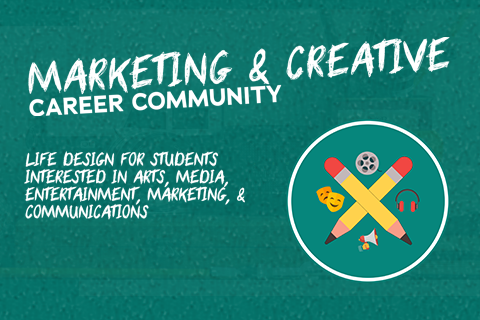Explore a career in Visual Art, Graphic Design, Fashion, Interactive Media, & Web Design.
The art and design fields focus on the production of visual art and include focused fields like:
- Fine art and visual arts
- Graphic and web design
- Fashion and costume design
- Set design (theaters, operas, and film)
- Interior, industrial, and landscape design
- Interactive media and video game design
- Photography and photo editing
Positions available for artists and designers can be found in galleries, museums, and theaters; newspapers, periodicals and book publishers; software companies; specialized design services; motion picture and video industries; marketing teams for organizations; amusement and other recreational industries; and many other organizations.
Employment Opportunities
Internships and short-term jobs (summer festivals, particular event, etc.) exist with profit and nonprofit organizations, lasting for a few weeks to a few months. In addition, apprenticeships can occur, assisting a specific designer or artist on a short-term project. Students are encouraged to attend cultural and industry events, network with professionals, and build their own portfolio of materials. Being active in the field and demonstrating experience (internships, freelancing projects, and even volunteer work) is crucial to landing a position. For full-time opportunities, sometimes advanced degrees, such as a Master of Fine Arts (MFA) may be necessary.
-
Successful candidates have:
- Basic knowledge of cultural institutions, the art market, and current trends
- Strong creative skills with the ability to execute design concepts in specific media and learn quickly
- Organizational and project management skills
- Self-motivation, versatility, and independent initiative
- Ability to communicate effectively with vendors, clients, and members of a creative team
- Experience with web programming, design software, or related technology, as applicable
- Portfolio: PDF and/or online
- Regardless of field or medium, the artistic and design process is highly creative with digital technology skills becoming increasingly important to distribute productions online. Students should start preparing as early as possible and consider designing a website to build a portfolio, source leads, and create an online brand for themselves. Additional elements can include an artist’s curriculum vitae, an artist statement, and documentation/photographs of their work.
-
Hiring cycle:
- Internship Cycle – On-demand, can be for spring, summer or fall internships
- Job Cycle – On-demand
- Freelance Work – It is quite common in art and design to do freelance work – something that usually starts part-time and could expand to full-time. To begin, students should build their portfolio of work and make connections with professionals in the field. In addition to artistic development, freelancers must also build business knowledge as they are, technically, running their own small business. Knowledge of business types, budgeting, marketing, and contracts can ensure that you are properly set up and can claim things appropriately on taxes. Without belonging to a large organization, freelancers also need to turn to other groups, such as unions, for things such as health insurance and retirement options.














